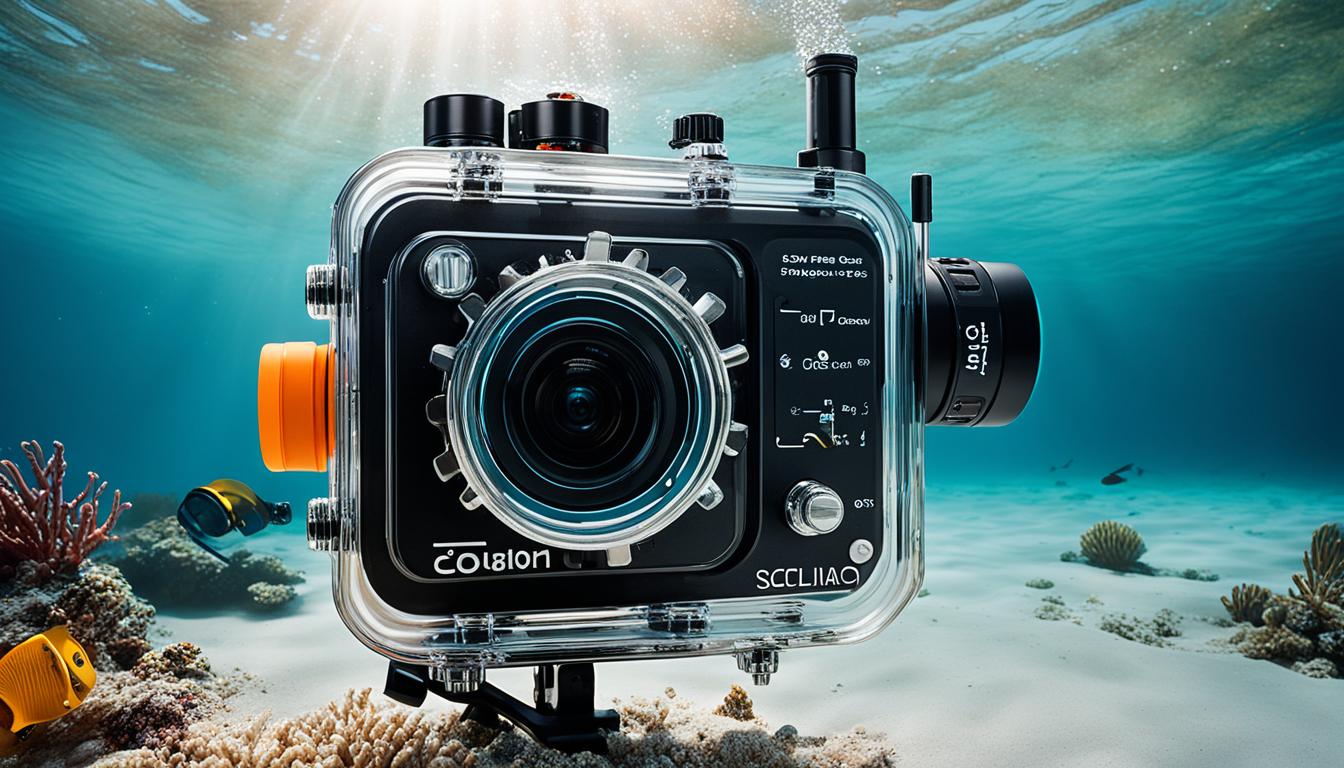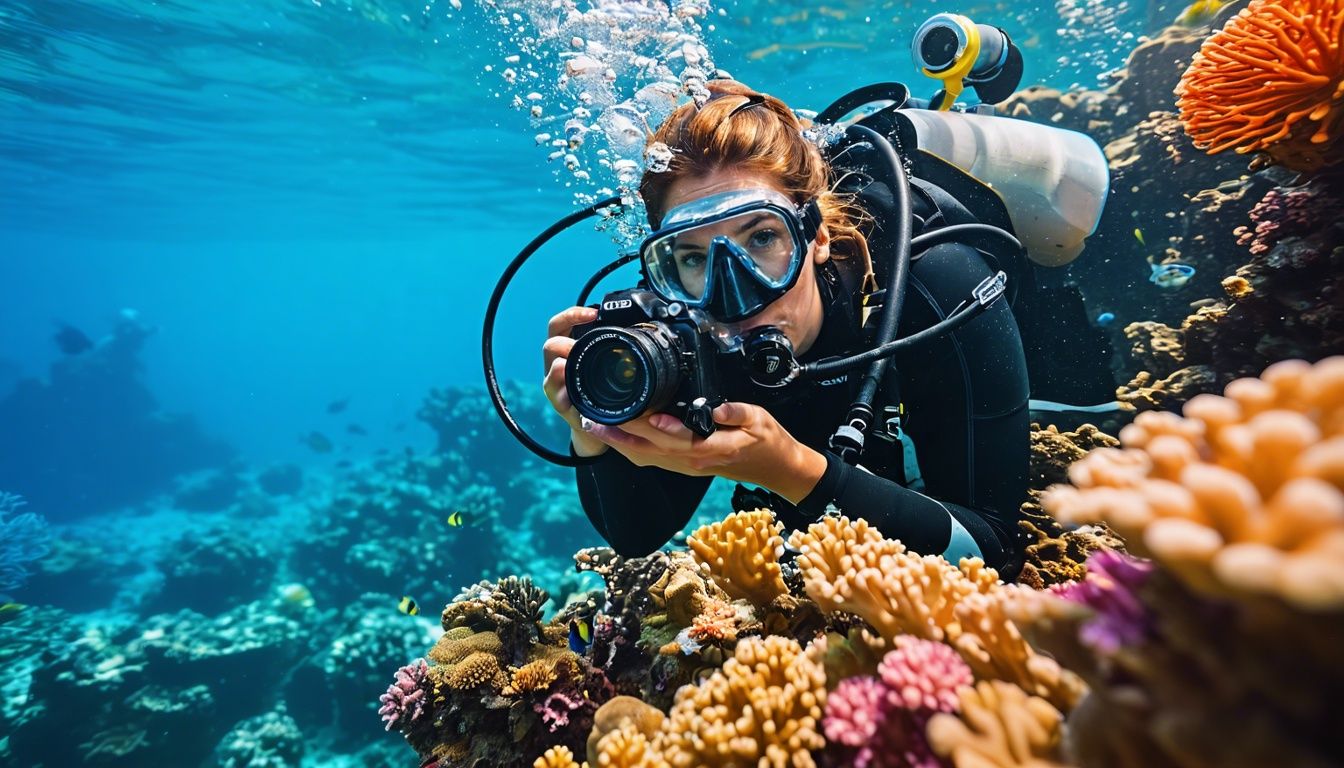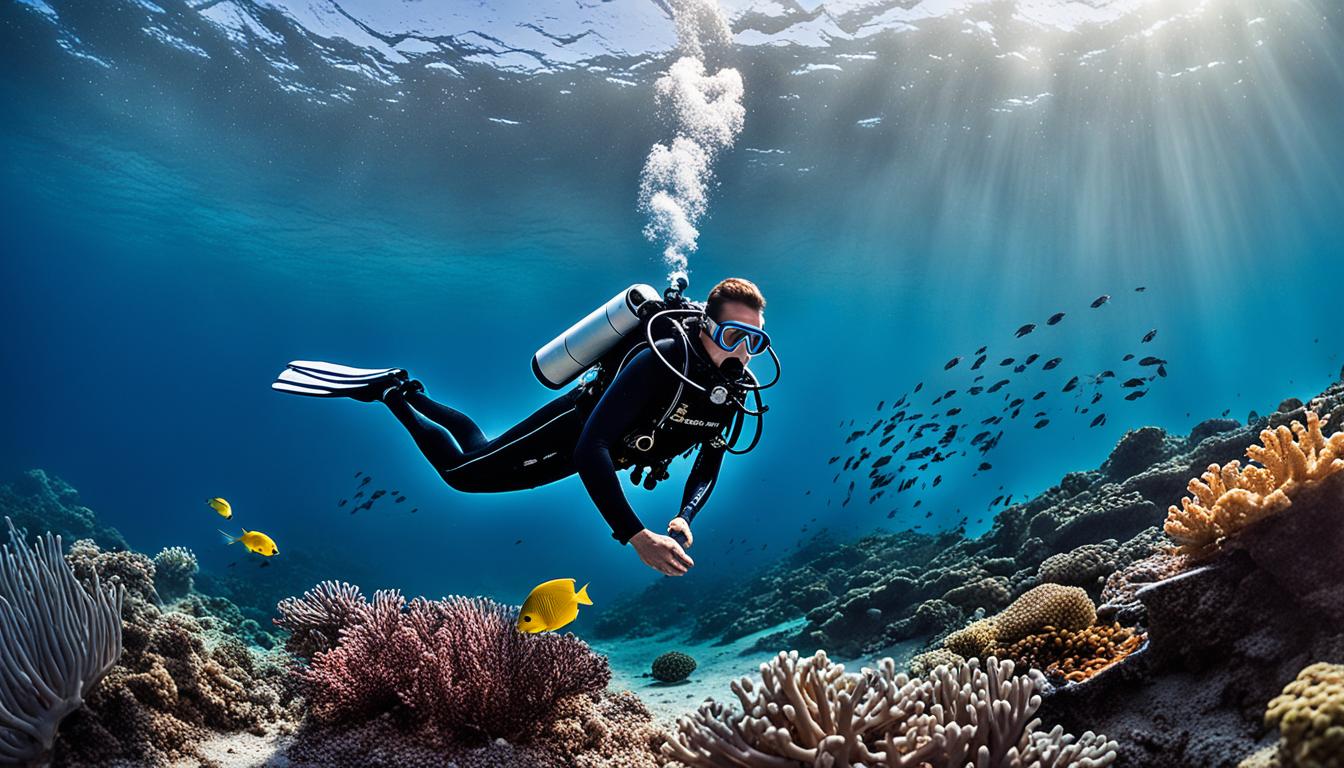So, you’ve finally decided to commit to the specialized art of underwater photography or video. After buying a camera, the next step is choosing an underwater camera housing. This essential piece of equipment keeps your camera safe and waterproof while diving. There are many things to consider when buying a housing.
The main things you need to consider when looking at underwater housings are the depth-rating, whether it is made of plastic or aluminum, ease of operation, weight and buoyancy, lens ports, and the ability to add accessories.
Key Takeaways:
- Choosing the right camera and housing is crucial for underwater photography.
- Consider the depth-rating, material, ease of operation, weight, and buoyancy of the housing.
- Check for compatibility with lens ports and accessories.
Now that we’ve covered the basics of selecting an underwater camera housing, let’s dive deeper into the details.
Things to Consider When Choosing an Underwater Housing
When it comes to capturing breathtaking underwater photos, selecting the right camera housing is crucial. The housing serves as a protective barrier for your camera, ensuring it stays safe and waterproof while you dive. But with so many options available, how do you choose the perfect housing for your needs? Let’s explore the key factors to consider.
The depth-rating of the housing is an essential consideration. It determines the maximum depth at which the housing can safely operate underwater. To ensure peace of mind during your dives, make sure the depth-rating exceeds your planned diving depth. This way, you can explore the underwater world without worrying about damaging your equipment.
Material: Plastic or Aluminium?
The choice between plastic and aluminium housings depends on various factors. Plastic housings are typically more affordable, lightweight, and suitable for occasional divers. On the other hand, aluminium housings offer higher durability and robustness, making them a preferred choice for professional underwater photographers and frequent divers. Consider your diving routine and camera-specific options before making a decision.
Ease of Operation: Capture the Perfect Shot
A user-friendly housing is essential for seamless operation underwater. Consider the accessibility and adjustability of controls, ensuring they are easy to reach and operate even with gloves on. Additionally, verify the compatibility of the housing with external lights and accessories, as these can enhance your underwater photography experience.
Weight and Buoyancy: Move Freely and Steadily
While diving, you want your camera housing to be a convenient extension of your movements. Therefore, it’s essential to find a housing that doesn’t hinder your mobility or affect the positioning of your camera. Opt for a housing that strikes the right balance between weight and buoyancy to ensure stability and ease of use.
Lens Ports: Clear Vision beneath the Surface
Depending on the lenses you use, you may need to purchase different lens ports separately. These ports provide a clear view and protect your camera lens underwater. You’ll have the option to choose between glass and acrylic ports, each with its advantages. Glass ports offer superior optical quality, while acrylic ports tend to be more affordable and lightweight.
Additional Accessories: Enhance Your Underwater Photography
To take your underwater photography to the next level, consider adding accessories to your camera housing setup. Strobes, lights, external viewfinders, and monitors can all enhance your ability to capture stunning underwater images. Evaluate your photography needs and explore the plethora of accessories available to enhance your creativity.
“The right underwater housing can make a significant difference in your photography experience. From withstanding the depths of the ocean to providing easy operation and accessory compatibility, every detail matters.”
Now that you know the essential factors to consider when choosing an underwater housing, you’re one step closer to capturing awe-inspiring images beneath the surface. Remember to prioritize your needs, preferences, and diving style while exploring the various options available. Let your passion for underwater photography guide you in selecting the perfect housing for your camera.
Factors to Consider When Choosing an Underwater Camera
When selecting an underwater camera, it is essential to consider the features, budget, and size and weight. Compact cameras are popular choices for beginners due to their ease of use, price, and versatility. DSLR cameras offer higher quality interchangeable lenses and sensors, but come with higher costs, weight, and complexity. The decision between a compact camera and a DSLR depends on personal preferences and photographic intentions. The availability of housing options for the selected camera is another crucial factor to consider.
Tips for Setting Up and Maintaining Your Underwater Housing
Proper setup and maintenance of your underwater housing are crucial for capturing high-quality images and ensuring the longevity of your equipment. Here are some essential tips to keep in mind:
- Charge your batteries: Before each dive, ensure that your batteries are fully charged and have spares on hand. This will prevent any unexpected power issues while underwater.
- Set up in a clean, dust-free area: Always set up your camera indoors in a clean area with ample lighting. This will minimize the risk of dust particles or debris entering your housing.
- Clean and check O-rings: Take time to remove, regrease, and clean the O-rings of your housing. Check for any damage or stretching that may affect the seal. This will help prevent leaks and maintain the watertight integrity of your housing.
- Test your equipment: Provide enough space to spread out your camera accessories and take a test shot before heading underwater. This will ensure that everything is in working order and help you identify any issues beforehand.
- Perform leak tests: Use a leak detector or perform a dunk test to check for any potential leaks in your housing. This step is important for identifying and resolving any sealing issues before a dive.
- Properly clean and dry your housing: After each use, wash the housing thoroughly with freshwater to remove any salt or debris. Ensure it is completely dry before opening to prevent moisture damage.
- Consider using silica gel pouches: To remove any excess moisture, consider placing silica gel pouches inside your housing. This will help keep the interior dry during storage.
- Store your housing properly: When not in use, store your housing in a dry and safe place away from direct sunlight and extreme temperatures. This will help maintain its condition and prevent any potential damage.

Conclusion
Choosing the right camera and housing for your underwater photography adventures is a personal decision that depends on your individual needs, preferences, and budget. When making your selection, consider important factors such as the available features, housing compatibility, manual controls, manual white balance, lens options, shutter lag, RAW file capability, and megapixels. These considerations will help you find the perfect setup that suits your specific photography goals.
Once you have your camera and housing, proper setup and maintenance are crucial for achieving optimal performance. Ensure all batteries are fully charged before each dive and have spare batteries on hand. Set up your equipment in a clean, dust-free area with ample lighting before heading out on your underwater excursions. Pay special attention to removing, regreasing, and cleaning the O-rings, checking for any damage or stretching. Take a test shot to ensure everything is functioning properly, and perform a leak test or use a leak detector for added peace of mind.
If you’re uncertain about your equipment or have specific questions, don’t hesitate to seek advice from reputable underwater photography retailers or experienced photographers. They can provide valuable insights and guidance based on their own experiences. By combining the right equipment with proper techniques, you’ll be ready to embark on an exciting underwater photography journey and capture stunning images that showcase the beautiful wonders of the underwater world.
FAQ
What should I consider when choosing an underwater housing?
When selecting an underwater housing, you should consider the depth-rating, material (plastic or aluminium), ease of operation, weight and buoyancy, lens ports, and the ability to add accessories.
What is the importance of the depth-rating of an underwater housing?
The depth-rating of the housing is crucial as it determines the depth it can handle underwater. It is important to ensure that the depth-rating exceeds the planned diving depth.
Should I choose a plastic or aluminium housing?
The choice between plastic and aluminium housings depends on the regularity of diving and the availability of camera-specific options.
What factors should I consider when choosing an underwater camera?
When choosing an underwater camera, you should consider the features, budget, size and weight, and the availability of housing options for the selected camera.
What are some tips for setting up and maintaining my underwater housing?
Some tips for setting up and maintaining your underwater housing include fully charging your batteries before each dive, setting up your camera in a clean environment, checking and cleaning the O-rings, performing a leak test, washing the housing in freshwater after each use, and storing it properly.
How can I minimize the eco-impact of underwater photography with my selected camera and housing?
When considering the ethics of underwater photography, it’s important to choose camera and housing equipment that minimizes environmental impact. Look for gear that is designed to be eco-friendly, such as housings made from sustainable materials and cameras with energy-efficient features. Also, be mindful of your actions while shooting to ensure minimal disturbance to marine life.




